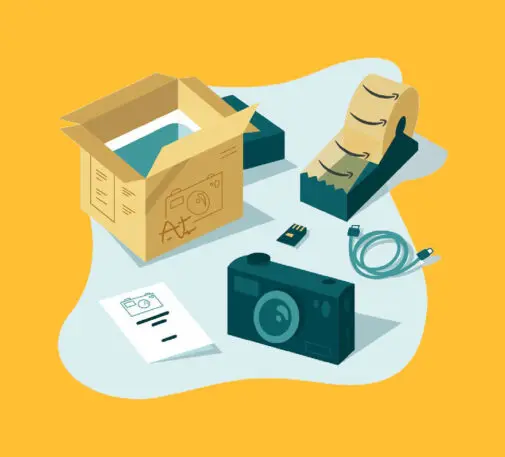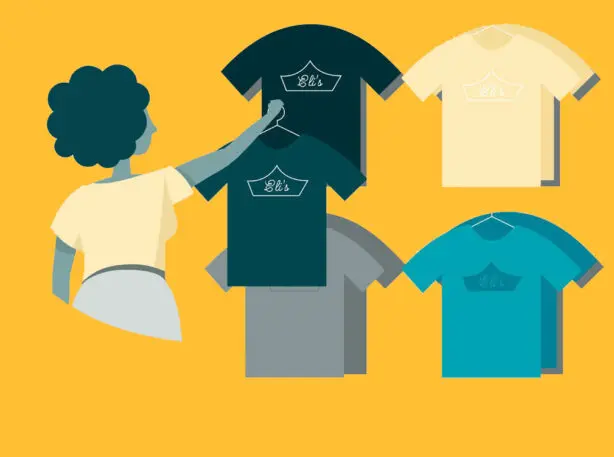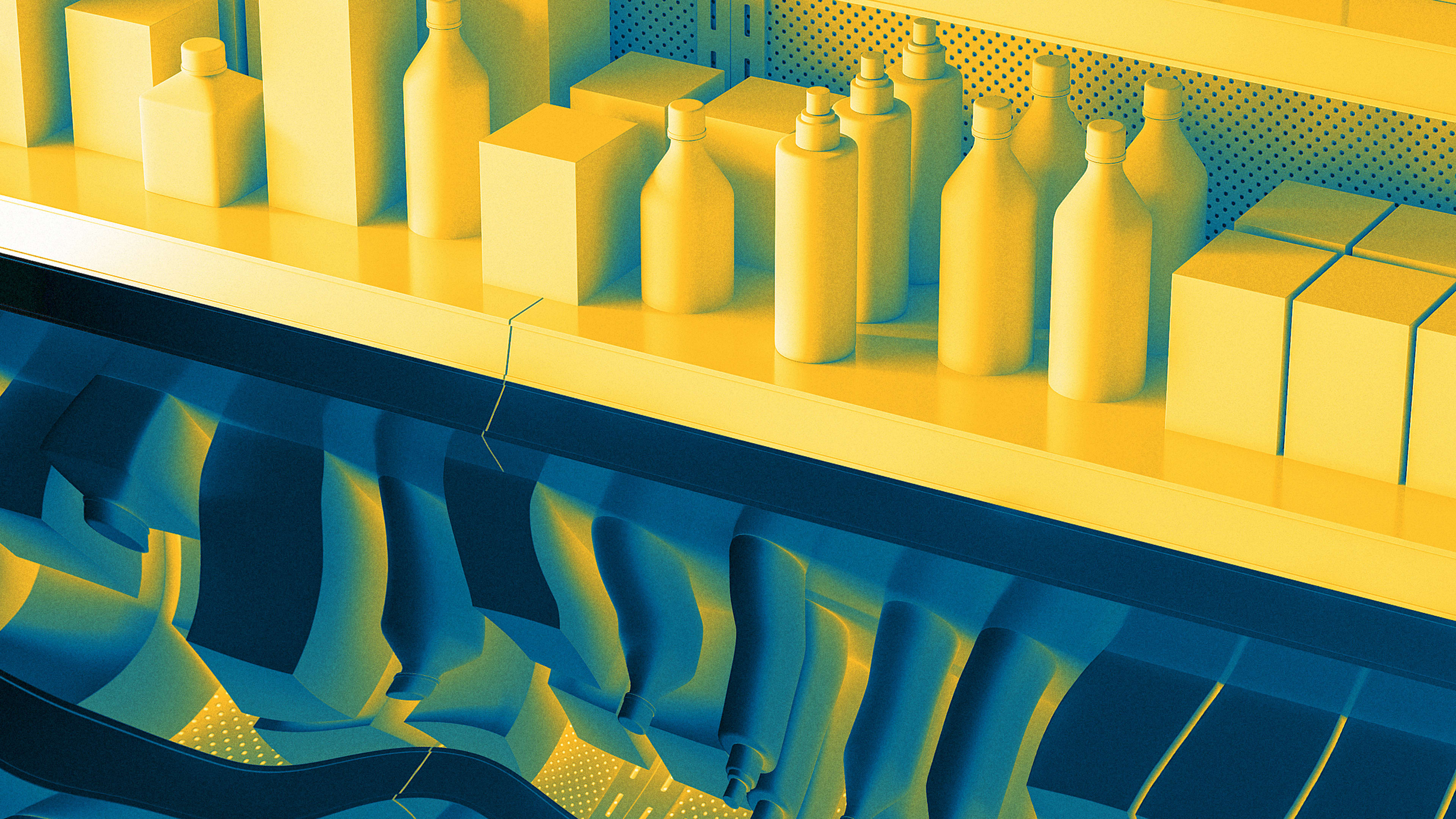Amazon buyers, beware. If you’ve purchased anything from Neutrogena soap to a Doona stroller, you may have gotten a counterfeit product.
A new report from Amazon reveals it blocked 10 billion attempted counterfeit listings in 2020—up from 6 billion from the year before—and destroyed 2 million fake goods in its warehouses.
Researchers who study counterfeiting estimate that nearly $1 trillion worth of fake goods flood the global economy. These experts say that most of the fake goods on Amazon are not knockoff designer handbags, but counterfeits of everyday staples like Dove soap, Similac formula, and Hydro Flask bottles. These products look identical to those manufactured by the brand, but are made from cheaper, unregulated materials. The fake goods have sometimes harmed consumers: One 4-year-old boy had to have parts of his colon and intestines removed when he swallowed magnets from a counterfeit Magformers toy.
So who is taking the time to create fake versions of relatively inexpensive household goods? Robert Handfield, a North Carolina State University professor who has studied Amazon’s counterfeiting problem, says there is an entire underground economy devoted to creating every possible consumer product imaginable. This includes everything from laundry detergent to running shoes, which eventually end up on internet marketplaces, like Amazon. (Terrifyingly, there are also counterfeiters who make knockoff aircraft parts and COVID-19 vaccines, selling them through other underground websites.)
The internet has changed the game for the counterfeiting industry. In the past, there were channels for people to buy fake luxury goods, such bootleg stores on Canal Street in New York. But now counterfeiters have access to American consumers on Amazon and to Chinese consumers on Alibaba. “Anywhere you can make a buck selling something at high volume on the internet, you’ll be able to find counterfeiting,” says Handfield.
Roughly 80% of counterfeits that enter the United States come out of China and Hong Kong, according to Handfield’s analysis of reports from U.S. Customs and Border Protection about fake products seized at the border. He points out that this makes sense because the region is a manufacturing hub, so people have access to both equipment and knowledge about how to make consumer goods. “Someone who works at a legitimate factory may start up their own business making fakes,” he says. “They’ll copy it, sometimes using cheaper materials, and sell them on the same channels.”

Why is it so easy to sell fake goods?
When you scan through products on Amazon, the majority are not sold by Amazon, but by third-party sellers. Historically, Amazon has not carefully policed the authenticity of the products sold by these merchants. “Amazon does not do audits of distributors that claim to be selling original products,” Handfield says. “It has relied on companies and consumers to report counterfeit products to shut down the seller. But then it’ll just pop up somewhere else.”
Some brands have pushed back against Amazon for not tackling the counterfeiting problem more aggressively. In 2016, Birkenstock’s CEO took the dramatic step of pulling products off Amazon, saying that Amazon was unwilling to help the brand identify and fight those making fake versions of its shoes. In 2019, Nike said it would also stop selling products directly on Amazon, partly because of the proliferation of counterfeits on the site. Both Birkenstock and Nike declined to comment on whether they might reconsider partnering with Amazon now that it is beefing up its anti-counterfeiting measures.
Amazon is taking counterfeiting more seriously. In 2019, it announced an initiative called Project Zero devoted to cutting out all counterfeits from the platform. This involved rolling out new machine-learning technology that automatically scans and removes suspected fake listings, but the company has not provided much detail about how these systems work. Brands could also apply to be part of a program that would allow them to directly flag and remove counterfeit listings from Amazon on their own. In the past, they would have had to submit a request to Amazon, which would take time to evaluate the claim and remove it.
In June of last year, Amazon established a Counterfeit Crimes Unit made up of former federal prosecutors and data analysts to tackle the problem. In last week’s report, Amazon said it has spent a total of more than $700 million and hired more than 10,000 people to protect the site from fraud.
When we reached out to Amazon, a spokesperson explained that the company is working to strike a balance between creating business opportunities for individuals, while cutting out fraud. “Selling in Amazon’s store opens a world of opportunity for entrepreneurs,” a spokesperson said. “We make it straightforward for entrepreneurs to set up a selling account, and difficult for bad actors.”
And the spokesperson also made the case that the new suite of tools has been yielding result. “We use industry-leading tools to verify potential sellers’ identities and our proprietary systems analyze hundreds of unique data points to verify information provided by potential sellers,” he said. “In 2020, only 6% of attempted new seller account registrations passed our robust verifications process and listed products. As a result, fewer than 0.01% of all products sold on Amazon received a counterfeit complaint from customers.”

How to protect yourself
But it might be too little too late, give how vast the problem has become, Handfield says. Many consumers and brands have lost trust in the platform. “Amazon has been dodging this problem for years,” he says. “It is a gateway for many counterfeiters and the volume of the problem is astonishing.”
It’s unclear exactly how many counterfeits remain on Amazon’s marketplace, despite these measures. So Handfield says its is important to remain cautious when you’re shopping on the platform. There are some obvious signs that a product is fake, including spelling mistakes in the product description and blurry pictures. But many counterfeiters create professional-looking listings and product packaging. To truly make sure you’re not getting scammed, you need to look at the serial number on a product, then call the brand to make sure it is real.
For many consumers, calling brands to verify that each tin of baby formula or each bottle of dish soap is authentic is too much work. In this case, it might be easier to just buy products a grocery store or an online retailer like Grove Collaborative or Thrive Market that does not have a third-party marketplace. “I think you have to be super careful when you’re buying on Amazon,” Handfield says. “Counterfeits are a major part of the economy and these products are right under our noses in many cases.”
Recognize your brand’s excellence by applying to this year’s Brands That Matter Awards before the early-rate deadline, May 3.
